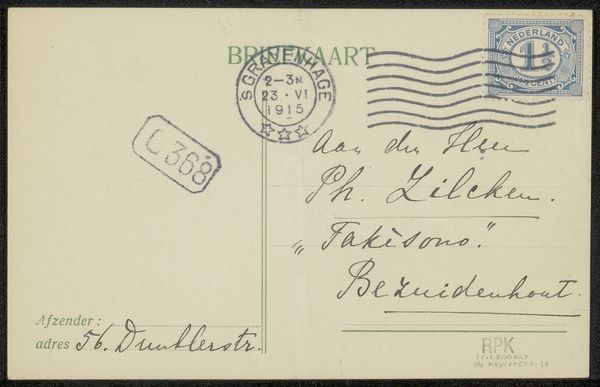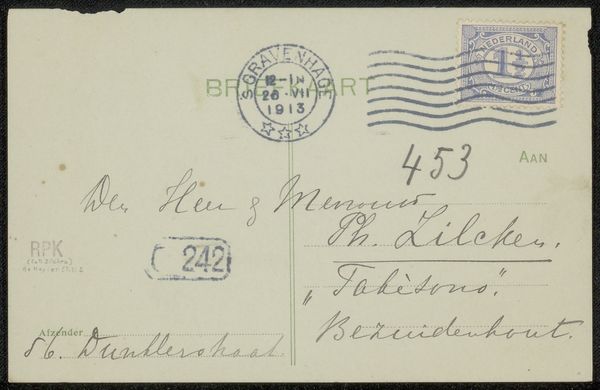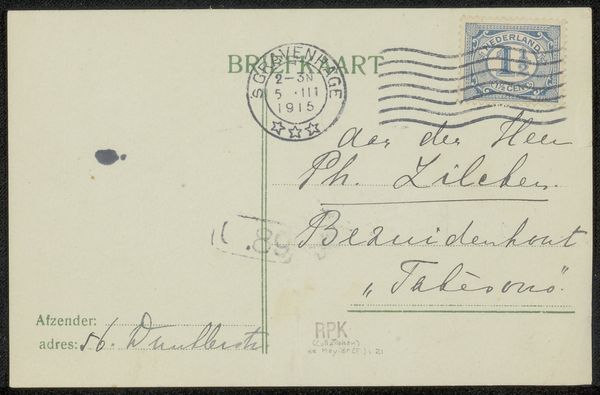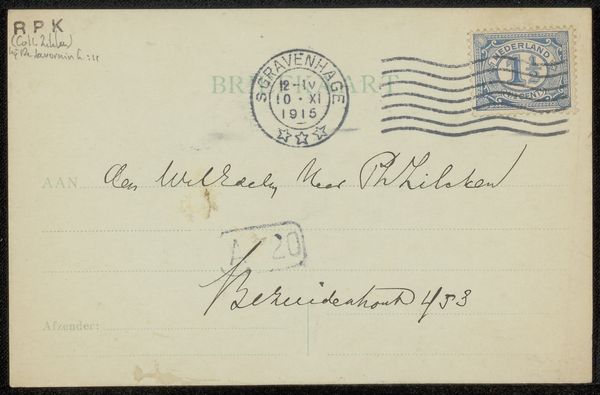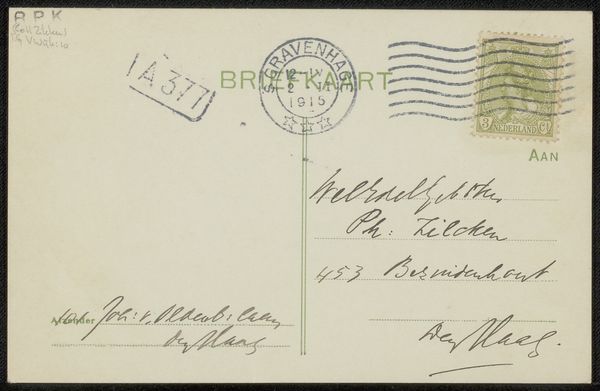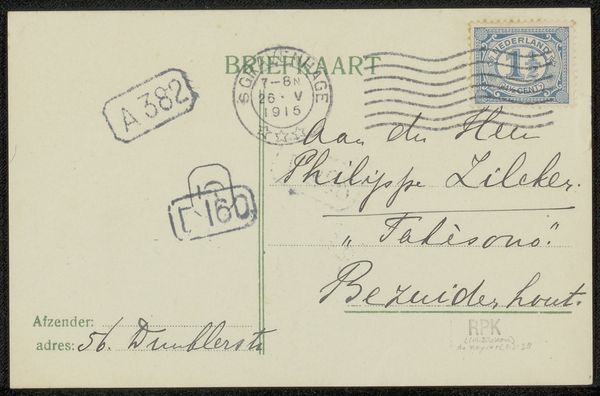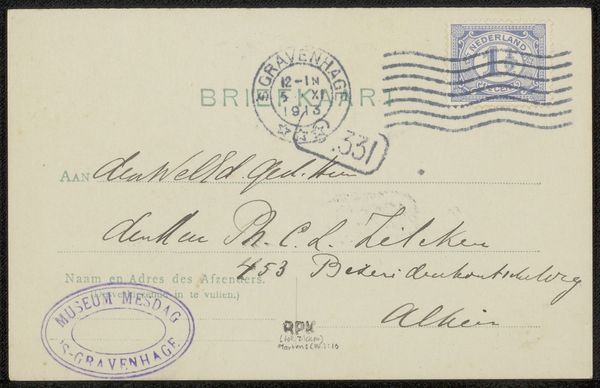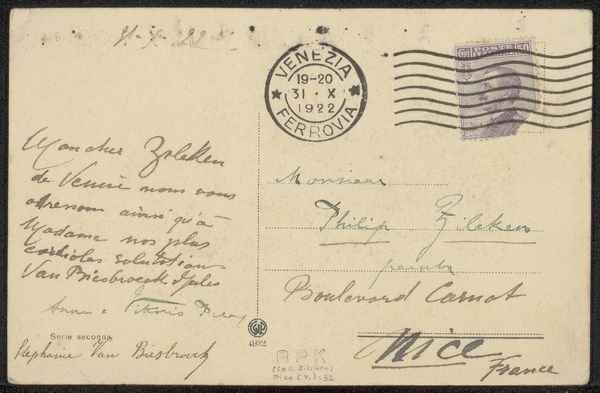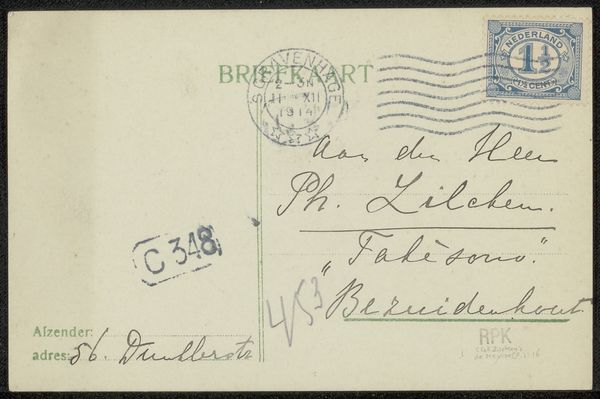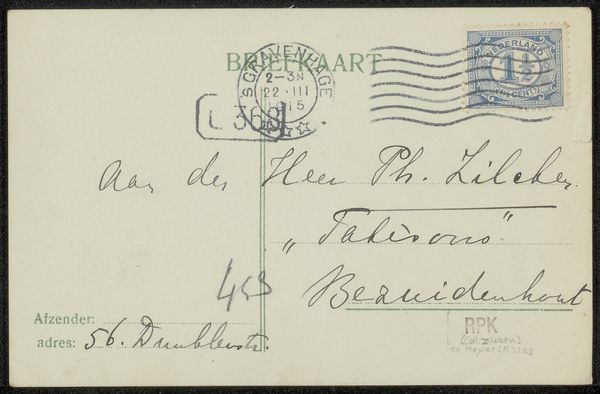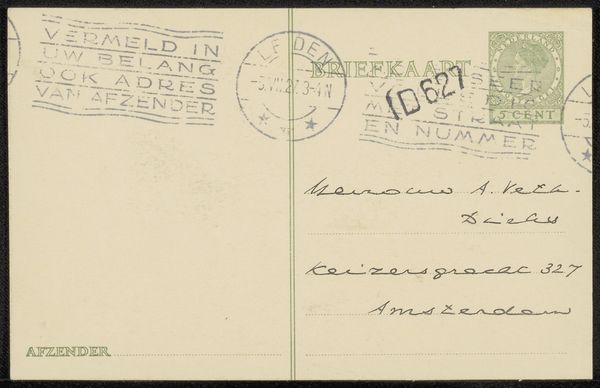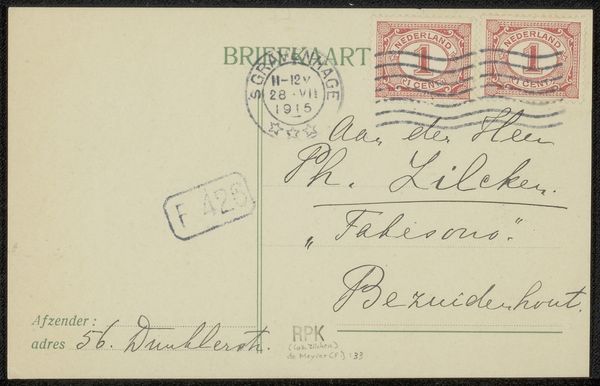
drawing, paper, ink, pen
#
drawing
#
hand-lettering
#
pen illustration
#
pen sketch
#
hand drawn type
#
paper
#
personal sketchbook
#
ink
#
ink drawing experimentation
#
pen-ink sketch
#
pen work
#
sketchbook drawing
#
pen
#
sketchbook art
#
calligraphy
Copyright: Rijks Museum: Open Domain
Editor: We’re looking at a postcard addressed to Philip Zilcken, possibly from 1915, done in ink on paper by Fenna de Meyier. It's so simple, yet I'm captivated by the elegant handwriting and the way it fills the space. What strikes you most about this seemingly mundane object? Curator: It's easy to overlook the significance of everyday objects like postcards. But consider the context: 1915. World War I is raging. A handwritten note, a personal touch, becomes incredibly poignant. What stories might this postcard carry about personal connections amidst global upheaval? Editor: So, you're saying its value isn't just aesthetic, but also a window into the anxieties and intimacies of the time? Curator: Precisely! Notice the postal stamp, the sender's address. These details ground the piece in a specific place and time. It also subtly highlights the importance of institutions of postal service and bureaucracy in our daily lives. It functioned to maintain normalcy in a time when such things were challenged on a global scale. It wasn't only about sending mail but also keeping spirits up through interpersonal communication. Who would have guessed all of this from looking at such a regular and "innocent" work? Editor: I didn’t consider the political context at all, actually. It’s like each stroke of ink carries a silent weight. Do you think the artist deliberately chose calligraphy to convey something specific, perhaps nostalgia or longing for normalcy? Curator: That’s a fantastic question! While we can't know for sure the artist's intentions, the calligraphic style adds a layer of formality and intentionality that mass-produced postcards lack. The emphasis could be that she paid mind to such formal elements as a means of elevating it above mere practicality. In any case, its value goes beyond being informative. It becomes precious through art and personal dedication. Editor: That’s truly enlightening! I’ll never look at a postcard the same way again. It's amazing how a small piece of paper can hold such historical weight. Curator: Indeed. Art, even in its most humble forms, can offer profound insights into the past and its relationship to the present.
Comments
No comments
Be the first to comment and join the conversation on the ultimate creative platform.
